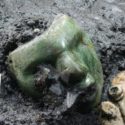Enigmatic Symbols And Carvings In Man-Made Cave In England Confound Experts
The Royston Cave is artificial in the English county of Hertfordshire. There’s no way of knowing who built the shelter or what it was used for, but there’s a lot of speculation. It is thought to have been utilized by the Knights Templar. Others speculate that it was an Augustinian store mine. It might have been a Neolithic flint mine, according to another idea. None of these possibilities have been proven, and the Royston Cave’s origins remain a mystery.
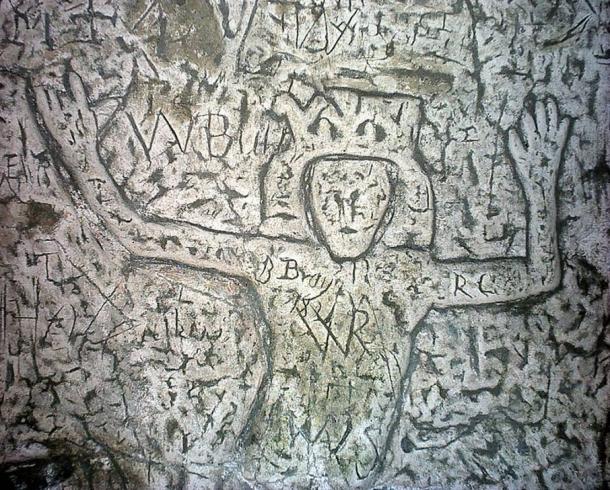
In August 1742, the Royston cave was discovered in Royston. At a market, a worker was digging holes for the foundation of a new bench. While excavating, he came upon a millstone, and as he dug around to remove it, he discovered the shaft leading to the cave. The cave was half-filled with mud and stones when it was found. There were attempts to remove the dirt and rocks, then dumped. Some speculated that wealth might be discovered in Royston cave. The clearing of the soil, however, revealed no treasure. Sculptures and carvings were found within. It’s worth mentioning that today’s technology could have allowed for a soil study if the soil had not been removed.
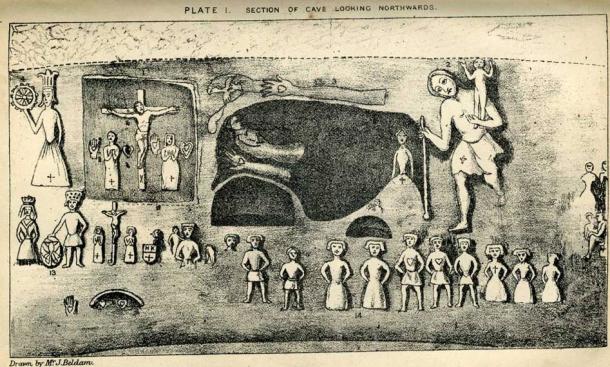
The statues discovered within are thought to be around 800 years old. Although only very minor traces of color are visible due to time’s passage, likely, the sculptures were previously colored. St. Catherine, the Holy Family, the Crucifixion, St. Lawrence holding the gridiron on which he was crucified, and a figure with a sword who may be either St. George or St. Michael are among the religious images. Candles or lights appear to have been placed in holes beneath the sculptures to light the carvings and sculptures.
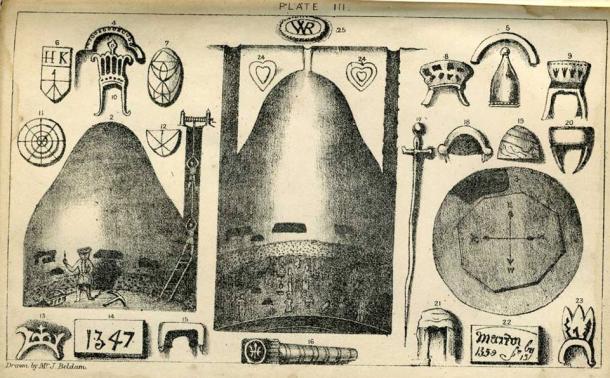
One of the most popular ideas about Royston Cave’s origins is that the Knights Templar utilized it before being disbanded by Pope Clement V in 1312. Some speculate that a wooden floor divided the cave into two beds. Two knights riding a single horse are depicted near a damaged area of the cave, which might be the remains of a Templar sign. According to architectural historian Nikolaus Pevsner, the date of the carvings is unknown, “It’s difficult to guess. They’ve been dubbed Anglo-Saxon, although they’re more likely to be from the C14 to C17 (the work of untrained workers).”
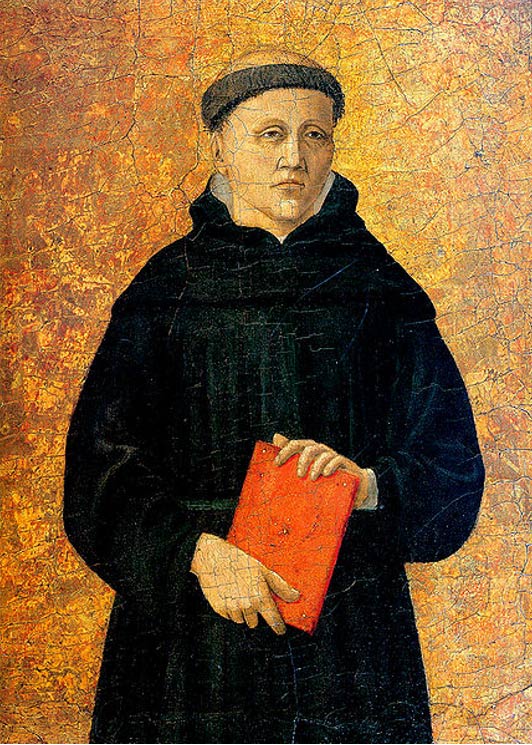
Another hypothesis is that Royston Cave served as an Augustinian storehouse. The Augustinians were founded in Africa by St Augustine, Bishop of Hippo. They were founded in 1061 AD and initially arrived in England during Henry I’s reign. Royston in Hertfordshire has been a center of monastic life since the 12th century, and the Augustinian monastery has been there for about 400 years. Local Augustinian monks are claimed to have utilized Royston cave as an excellent storage facility for their harvest and a church.
Finally, others suggest that it was utilized as a Neolithic flint mine as early as 3,000 BC when flint was mined to manufacture axes and other implements. However, because the chalk in this location only produces tiny flint nodules, which are generally unsuitable for ax manufacturing, this argument may be questioned.

Who built Royston cave and for what reason remains a mystery to this day. It’s always conceivable that the original group who created the cave abandoned it at some time, enabling another tribe to exploit it. The cave’s mystery, as well as the sculptures within, make it an intriguing place for tourists who want to guess about the cave’s beginnings.
Because bug larvae and worms were causing damage to the cave’s walls and structure, Royston cave required frequent cleaning and restoration. Work to avoid such harm has been considered successful by August 2014. Rather than employing pesticides, the preservationists excavated a portion of the dirt, depriving the worms of their food source. Hopefully, following pipe repairs to prevent flooding and additional efforts to reduce vibration damage from above-ground activity will assist in maintaining the cave in the future.


